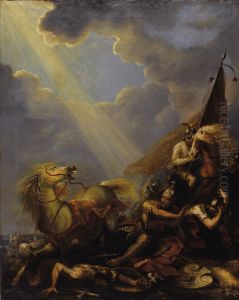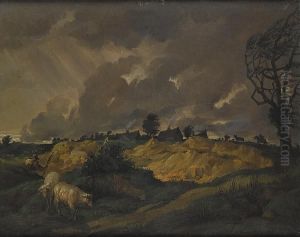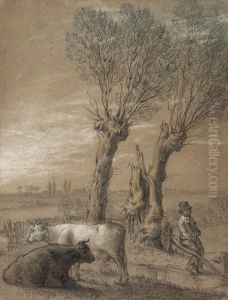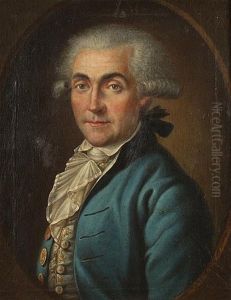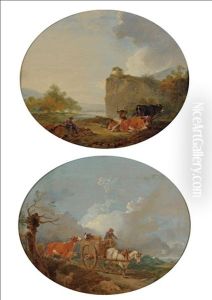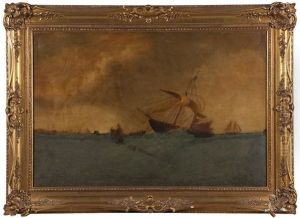Peter Francis Bourgeois Paintings
Peter Francis Bourgeois was a British landscape painter, the son of a Swiss immigrant to London. He was born on November 14, 1753, in London. Bourgeois was initially educated in Switzerland but returned to London to pursue a career in art. He is known for becoming a successful landscape painter, his works reflecting the contemporary movement toward Romanticism and the picturesque, emphasizing natural landscapes infused with a sentimental or dramatic quality.
Bourgeois was trained by Philip James de Loutherbourg, a prominent landscape and scene painter of the time. Under de Loutherbourg's guidance, Bourgeois developed his painting style, which combined elements of the dramatic lighting and detailed scenery characteristic of his mentor's work. Bourgeois exhibited at the Royal Academy in London from 1776 onwards, and although he never became a leading figure in the British art scene, he enjoyed a degree of commercial success and was well-regarded among his peers.
In 1791, Bourgeois was appointed as the landscape painter to King George III, which significantly elevated his status in the art world. However, his relationship with the Royal Academy was complex, and he was not elected as a full Academician until 1793. His later life saw a significant turn when he became friends with Noel Desenfans, a private art dealer, and collector. Along with Desenfans, he was instrumental in forming a significant art collection initially intended for the King of Poland, Stanisław II Augustus. However, after the third partition of Poland, the collection had no royal recipient and eventually became the core of the Dulwich Picture Gallery in London, as per the terms of Bourgeois's will.
Peter Francis Bourgeois died on January 8, 1811, in London. Following his death, his contributions to the Dulwich Picture Gallery included not only the collection he had helped to amass but also a bequest of his own works and funds to build a gallery to house the collection. The Dulwich Picture Gallery, which opened to the public in 1817, was the first purpose-built public art gallery in England and remains a significant cultural institution to this day.
